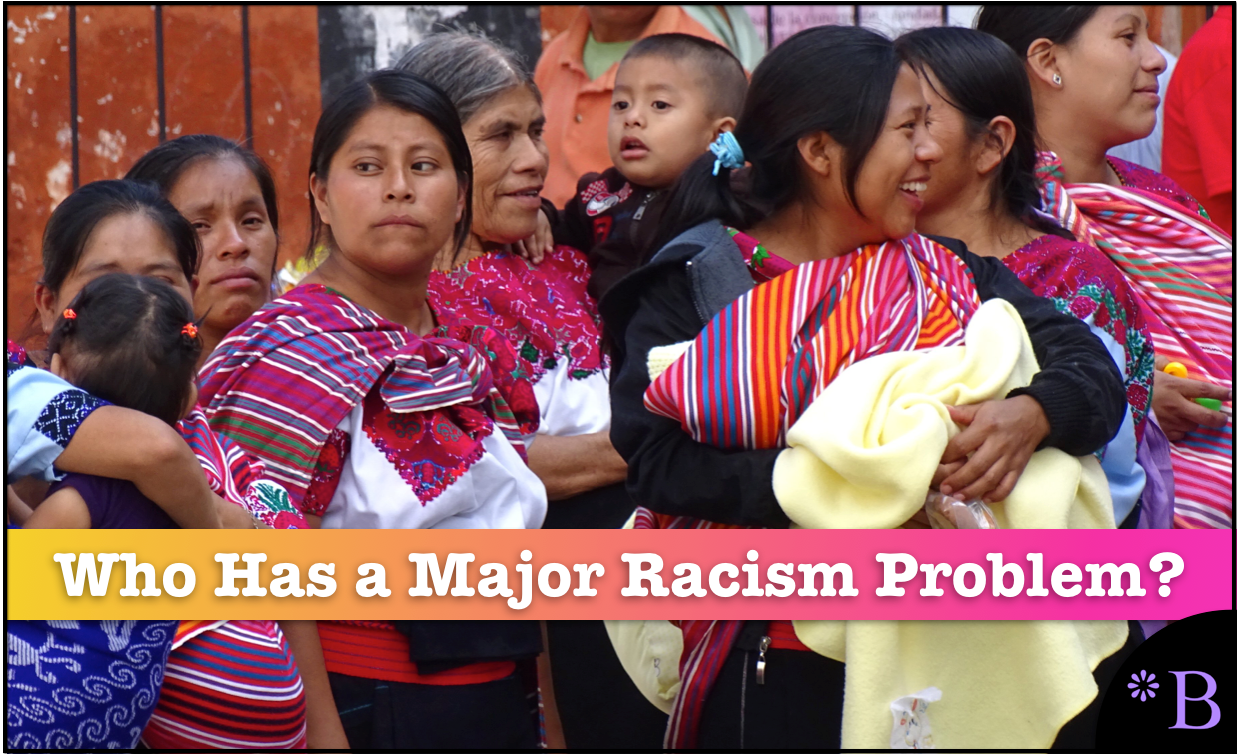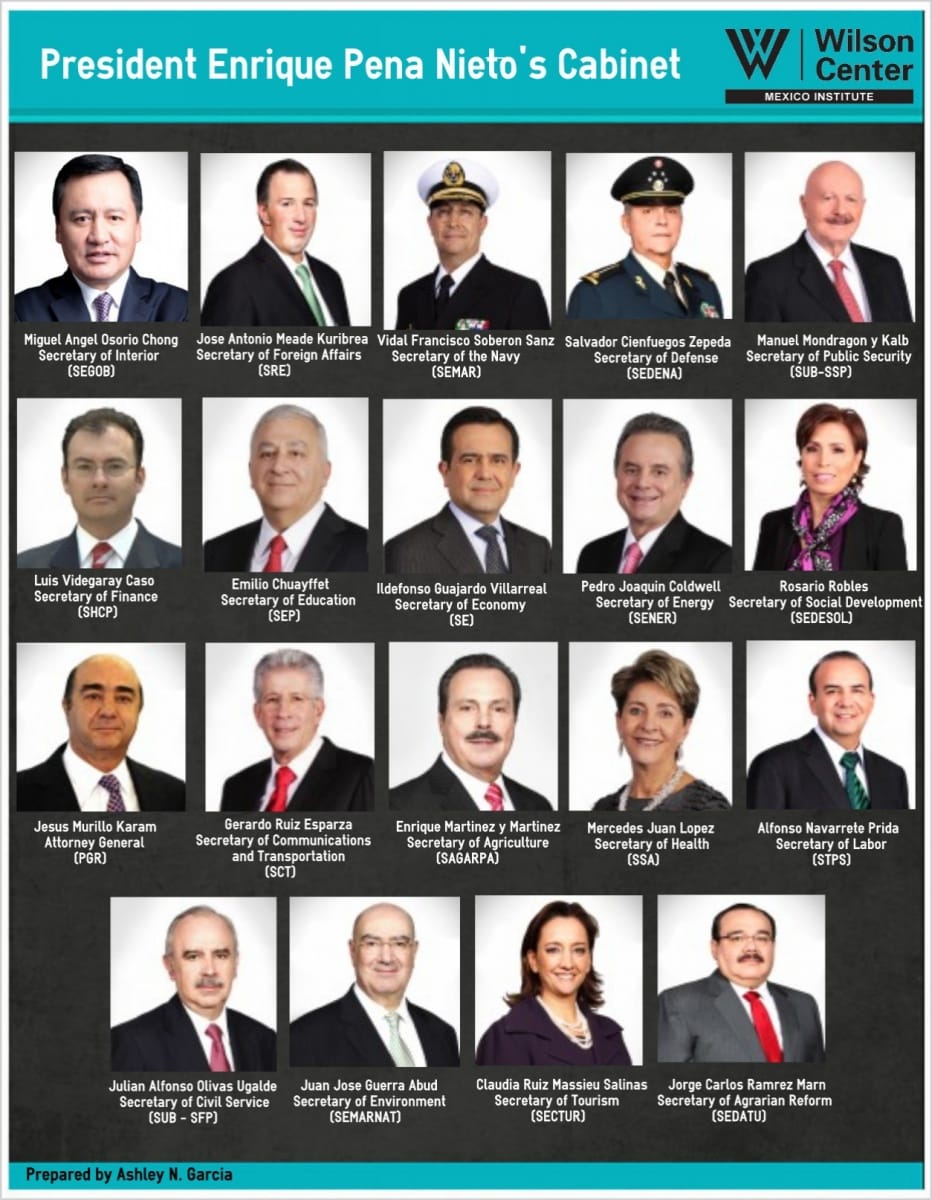The Terrible History of Mexican Racism Against Mexican Indians
Executive Summary
- Mexicans in the US make a big issue that enforcing US immigration laws is a form of racism.
- Curiously, Mexicans in Mexico have such a history of real racism against Indians.

Introduction
“We Indian farmers seem to cause blindness in people because they act like they don’t see us,” said Vazquez, an elder in Chenalho, a Tzotzil Indian town. He wears a traditional beribboned hat and carries a wooden staff of authority.
The treatment of Mexico’s Indians has been largely an invisible issue for decades. – Los Angeles Times
Charges of racism, emanating from the US, having a law about preventing illegal immigration, which is openly flouted by millions of Mexicans, is odd when one knows the history of Mexico.

The presidential cabinet of Mexico does not look at all like either the indigenous population of Mexico nor everyday Mexicans.
It’s something she wants to give the millions of Indians who toil in labor camps to build hotels and office buildings on land their ancestors ruled 500 years ago, before the Spaniards conquered the Maya and Aztec empires and dozens of other indigenous peoples.
“For 500 years you’ve been told you’re an imbecile, that you can’t do anything for yourself, and in all that time you’ve demonstrated just the opposite,” Galvez said. “One of the main things we have to do is recover self-esteem.” – Los Angeles Times
It also appears that Indians are not at all treated well in Mexico. The US, by contrast, has made many improvements to its treatment of Indians respecting their Tribal lands, giving them legal concessions such as gambling, and allowing them to leverage their Tribal lands to create a wide variety of income. Mexico has done nothing like this for the Indians in Mexico. The only mistreatment one ever hears about (for some odd reason) is the mistreatment of American Indians. Are history authors familiar with the fact that Indians were present throughout all of the Americas, not just the part of the Americas that is now the United States?
Mexican See Indians in Savage Tropes?
Indian accents and mannerisms are the butt of jokes on television and in movies. At official “cultural” events, Indians are sometimes depicted with buckskin dresses and feather headdresses that seem copied more from U.S. cowboy movies than from any group that exists in Mexico. – Los Angeles Times
Because that type of thing would never fly in modern-day America, I thought that Mexicans did not like racism? Why is it ok for Mexicans to humiliate Mexican Indians?
“Everywhere you go, people see you as an Indian and they aren’t going to take you into account,” he said. “They make you wait. You can be standing there for hours, days, and nobody will care if you’re tired or hungry.” – Los Angeles Times
Once again…this seems like a long term problem.
Is it Not Ok to Not Speak Spanish?
In the US, Mexicans refuse to pick up English in any discernable degree and prefer to speak Spanish with other Mexicans. This imposes a significant overhead onto the school system, which is forced to be bilingual and with Mexican children showing up to school without a sufficient background in English to be taught in English. However, that expectation changes when it comes to Indians in Mexico. They are expected to conform to the single official language of Mexico — which is Spanish.
Some Indians get a rudimentary bilingual education in grade school, but all are expected to learn Spanish, study the same history and civics, and live in communities governed on the same principles as the rest of Mexico. – Los Angeles Times
As explained by Mexicans in the US, it is oppressive to have to learn a new language when they come to the US. However, then why aren’t Indians also afforded the same opportunity and taught in both Spanish and English?
A High Percentage of Malnutrition
Mexica also does not seem overly concerned with keeping Indians out of poverty.
Just how poor they are is illustrated by Fox’s goal of reducing the level of malnutrition among Indian children from 41% to 30%. For generations, Indians have clung to isolated villages, planting the land the Spaniards or mestizos didn’t want. When it was exhausted, they moved farther into the outback, or to Mexican or U.S. cities to find work as day laborers. – The Los Angles Times
Treatment of the Indigenous in the Philippines
This same issue of mistreatment of indigenous applies in the Philippines.
And this video is semi-censored by Google and will show repeated warning messages to those that want to watch it. Treatment of the indigenous starts at around the 7-minute mark. I had no idea the Philippines had any indigenous.
There is so little coverage because indigenous people are not an issue unless the victimizes are white. Whites are told to hold themselves accountable for the mistreatment of American Indians. However, Philippinos are never told to hold themselves accountable for how indigenous people of the Philippines were treated. Furthermore, not only were indigenous of the Philippines treated very poorly in the past, they continue to be mistreated today.
Duerte is murdering indigenous leaders today. There are no murders of American Indians by the US government today. It is amazing what you can get away with and how little accountability will be placed on you — as long as you are not white.
Brazil also has a large number of indigenous people, many of whom live in the rainforest. There is very little coverage of Brazil’s indigenous. And most people in the world do not know they exist. It seems that because Brazil is not considered a white country (although the elite tends to be more purely European in their ancestry) and therefore, it is apparently not an issue how the Brazillian government treats the indigenous.
Conclusion
The reality of the treatment of Indians in Mexico makes the claims about racism driving US immigration policy ridiculous when Mexicans are so openly racist towards Mexican Indians. Mexicans have shown they will use any false argument to gain superior migration rights to the US over all other groups.
Other countries that are not white, do not face scrutiny for how indigenous people are treated. However, it is relatively common for people in these countries to state that the US was stolen from American Indians. Mistreating indigenous people is a global issue, but is only of interest if those that victimize indigenous peoples are white.
References
https://www.latimes.com/archives/la-xpm-2001-feb-25-me-29993-story.html